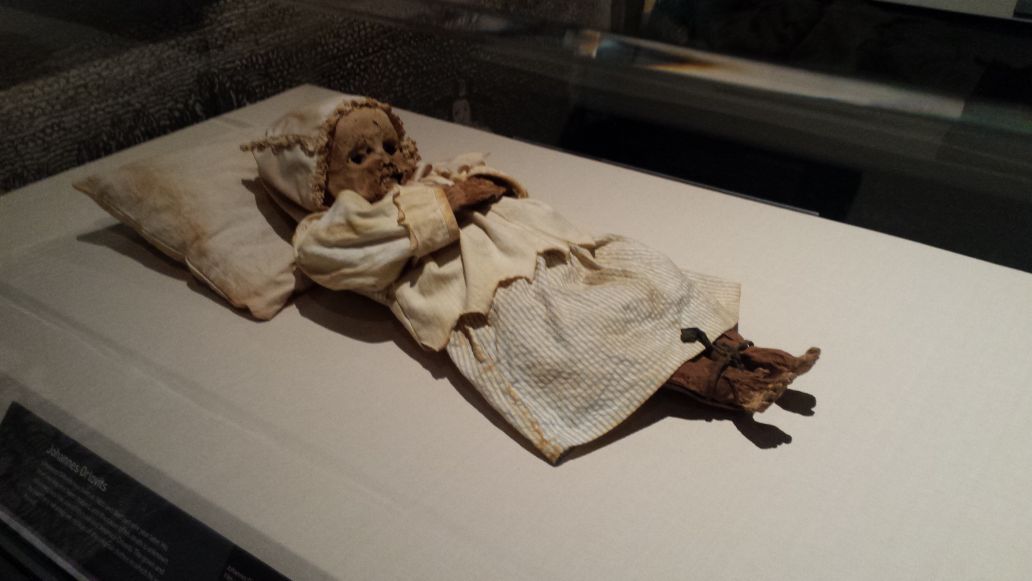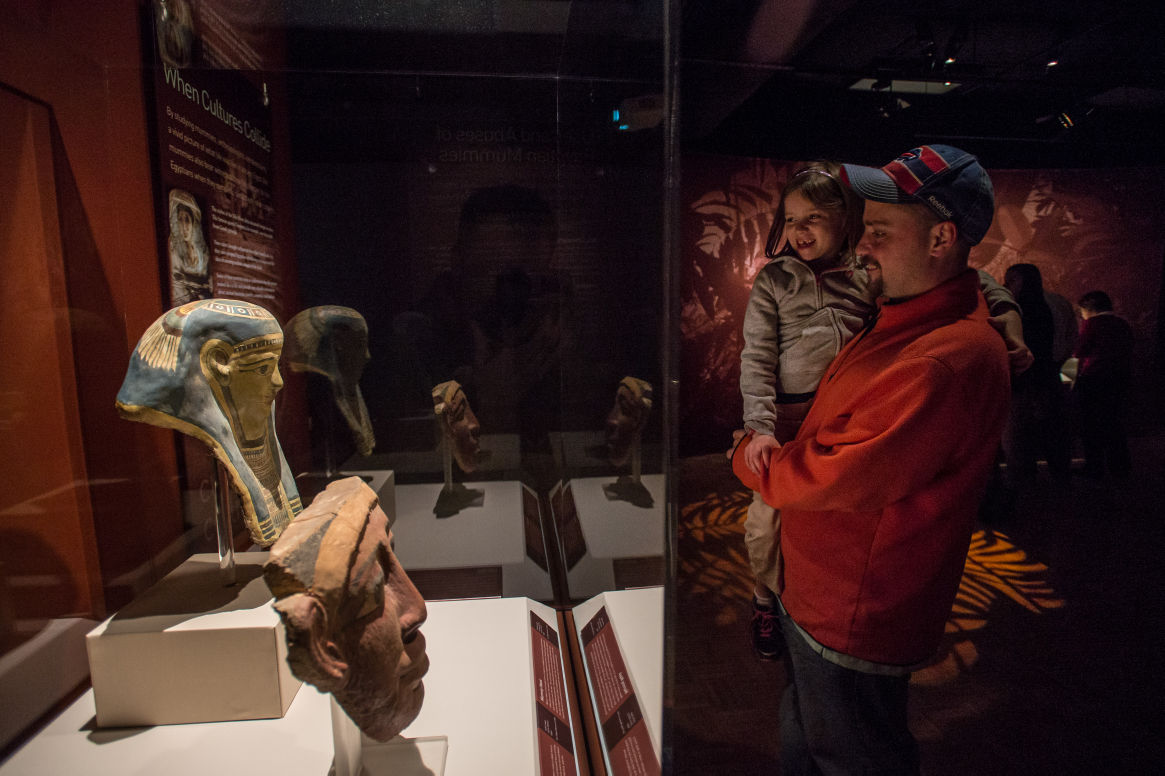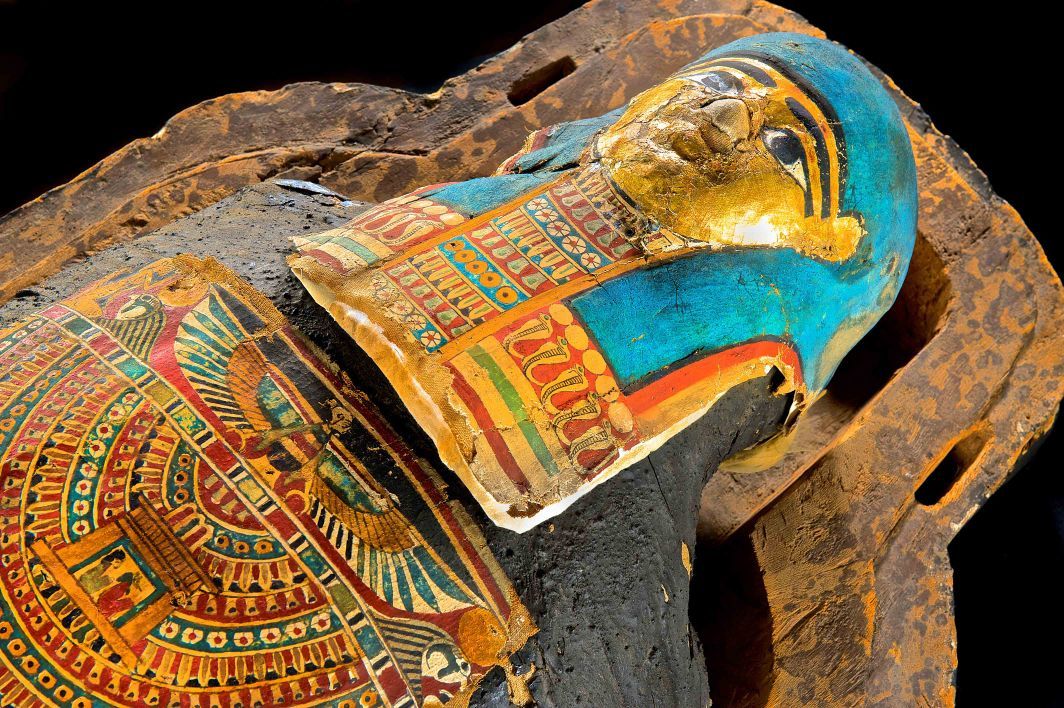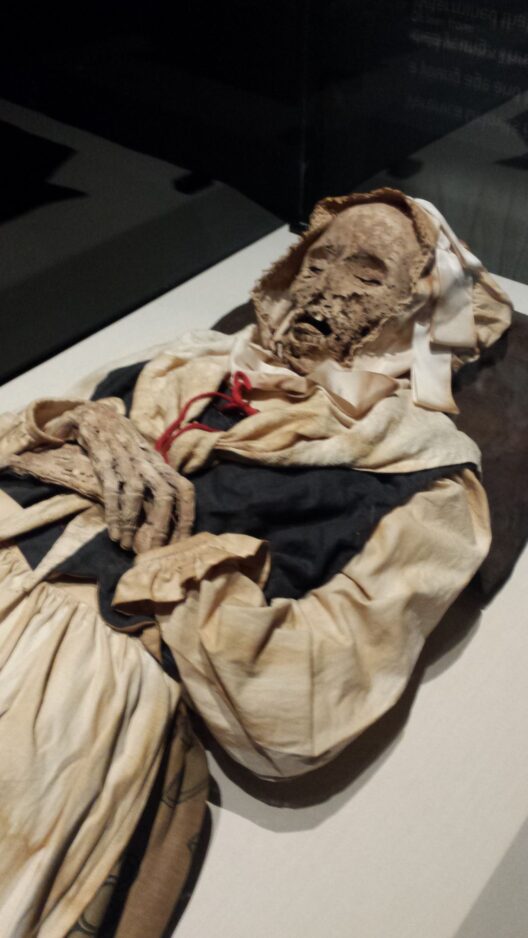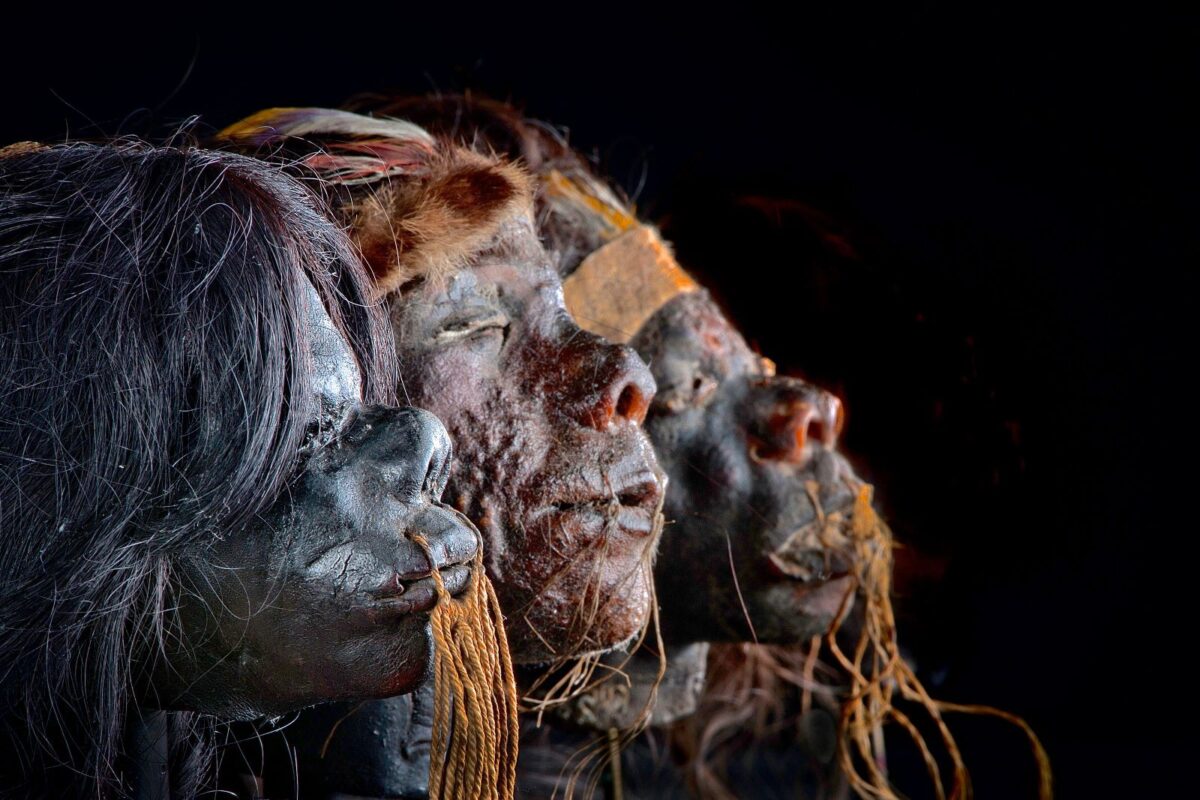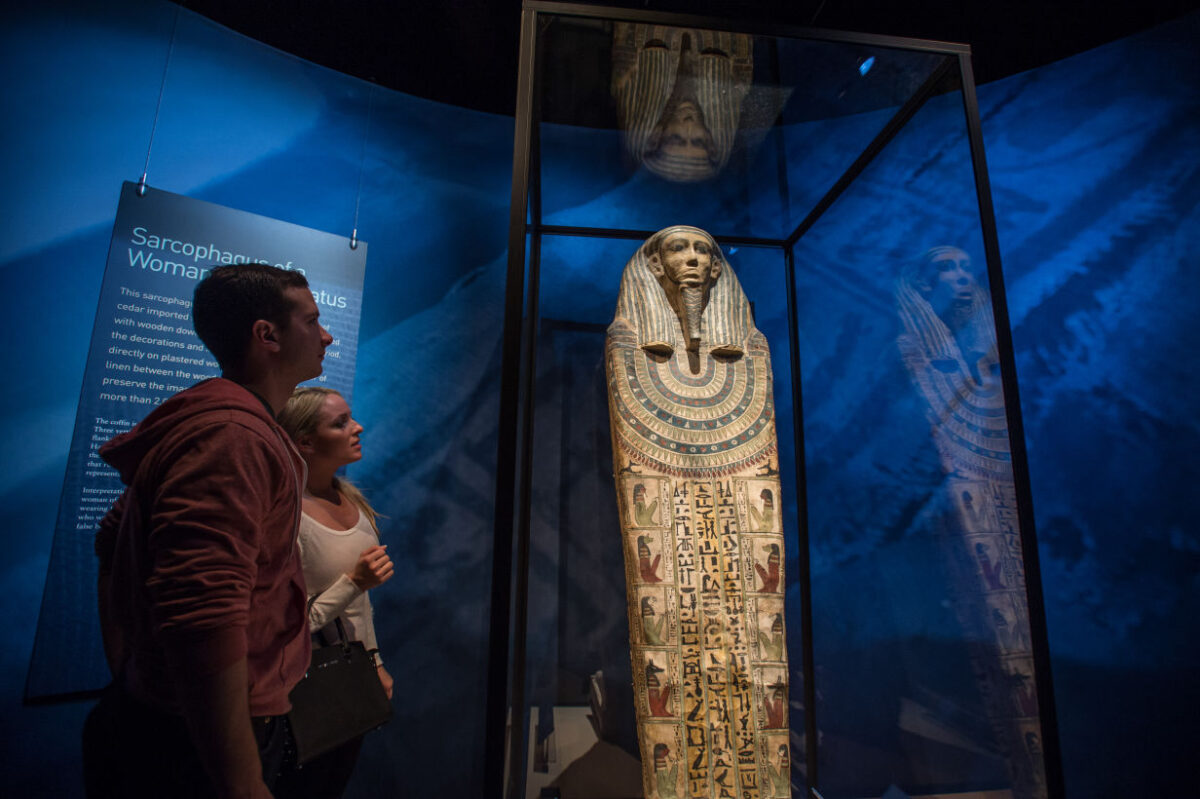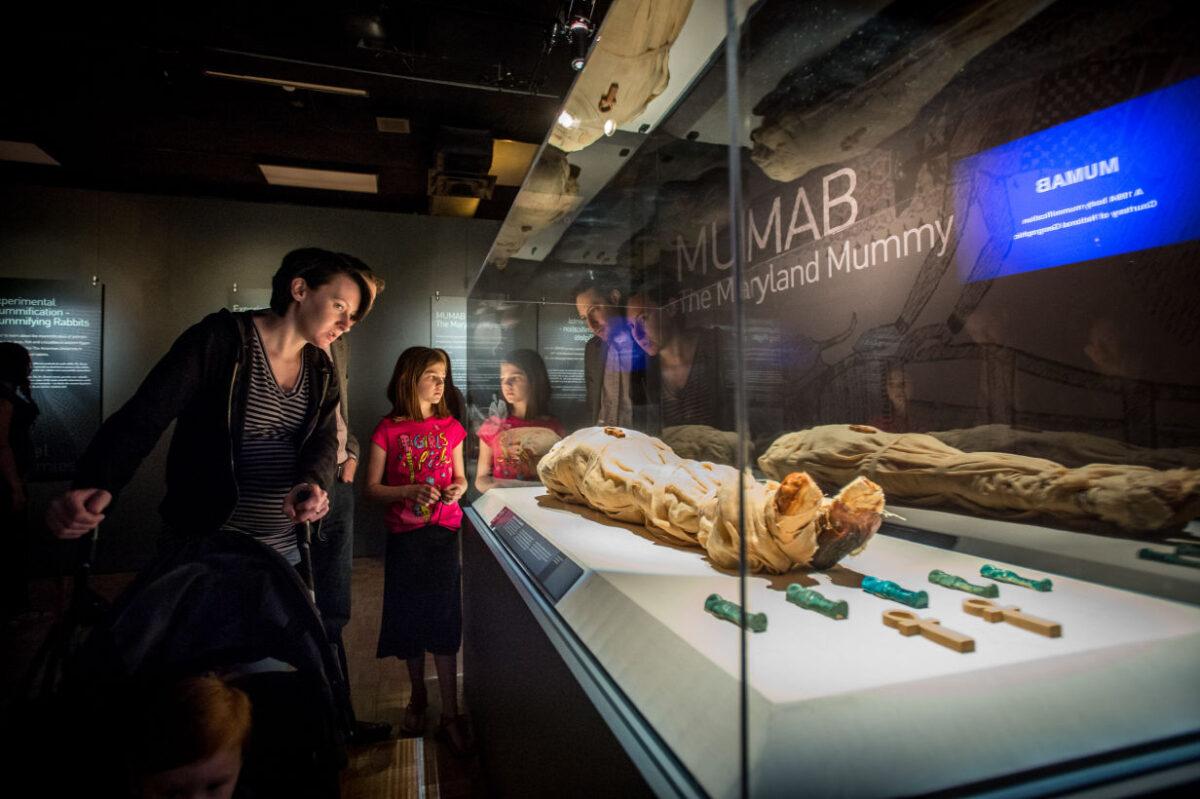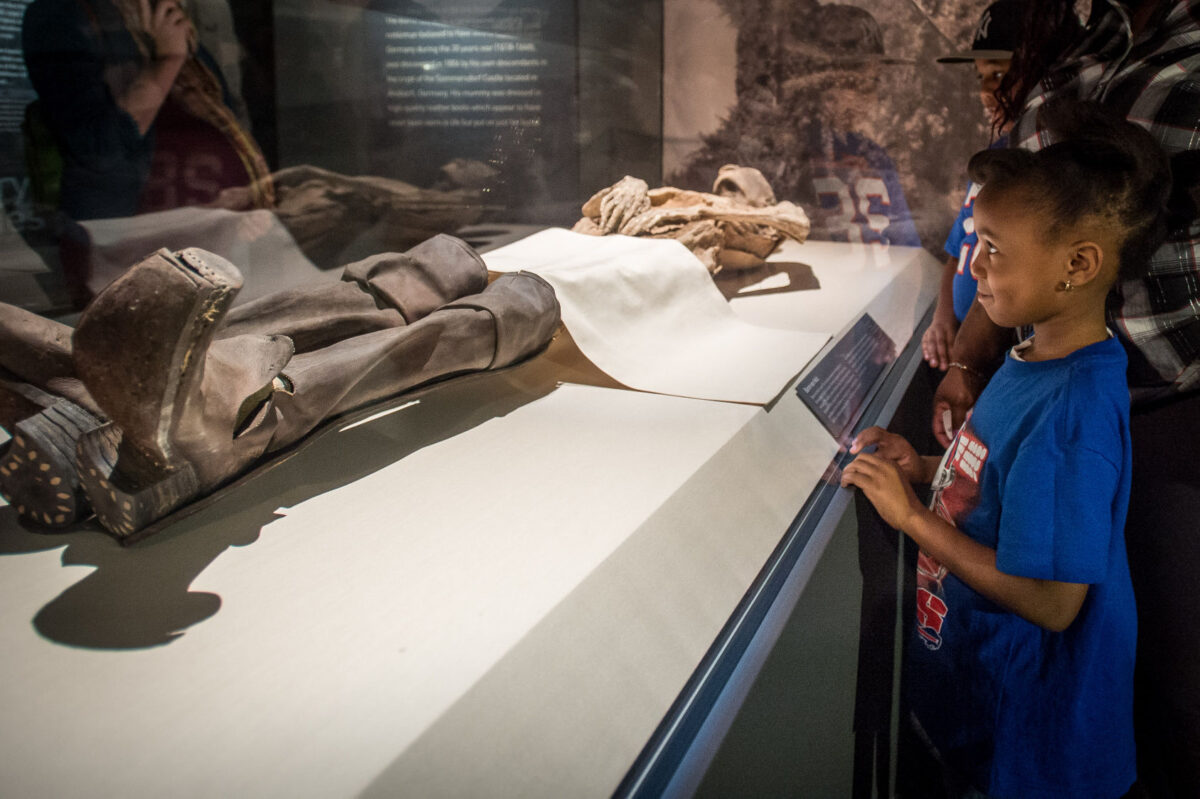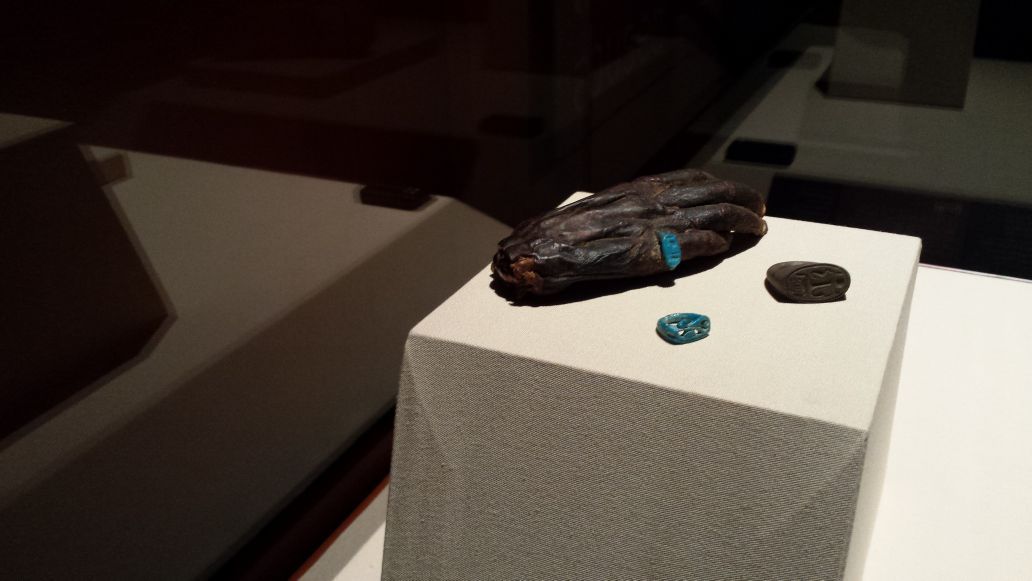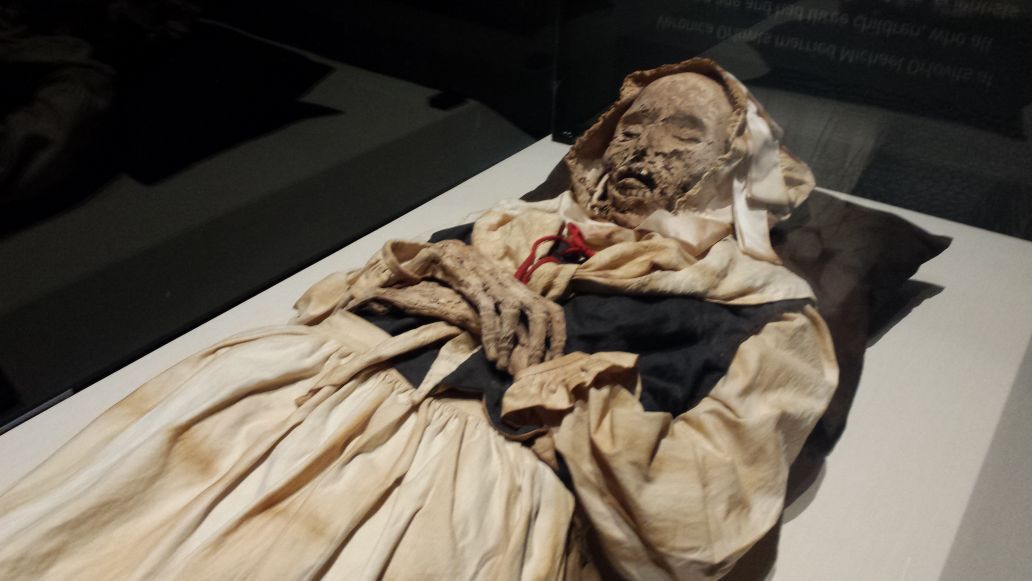‘Mummies of the World’ exhibit returns to Leonardo
Mummies have returned to The Leonardo in Salt Lake City after wrapping up their first appearance in 2013, which stands as the museum’s second-most attended exhibition with nearly 120,000 guests beholding the ancient wonders.
Several new pieces have been added to the new “Mummies of the World” touring exhibition, which has been viewed by more than 1.4 million people nationwide. Visiting exhibition producer Marcus Corwin presents the collection in nine galleries with at least two mummies more than 2,100 years old and one piece that’s approximately 4,500 years old.
“These are real people who had lives like you and I. They had desires like you and I — they’re interesting time travelers,” Corwin said. “And unlike you and I, they’re somewhere in eternity between life and death.”
Corwin serves as president of American Exhibitions, the entity that created the exhibit. He said when most people think of mummies they think of Egypt, however, some of the oldest mummies originate from the South American continent.
The Leonardo hosts the exhibit for its relatively brief stint of 11 weeks and features 45 mummies and a number of ancient artifacts including scanned color page recreations from the Book of the Dead. Human anatomy exhibits like “Mummies” are among the museum’s most popular with “Body Worlds” being its highest-ever attended exhibition with more than 300,000 visiting patrons.
Executive Director of The Leonardo Alexandra Hesse said an exhibit like “Mummies” engages the viewer right away because it’s about people and it’s about stories. Much of the interest draws on people’s natural curiosity and becomes justified when paired with practical elements such as science and technology.
“What I really like about this exhibit is to understand and to help kids understand how modern science and modern technology really allows us to learn more and more about these people,” Hesse said. “It’s just a great way to plant a hook, if you will, and plant an interest in science and tech, and in asking questions.
“And we’re really big on getting people to ask questions and be curious.”
Modern scientists use techniques involving DNA analysis, radiocarbon dating, CT (computerized tomography) scans, X-rays and visual inspection methods as they research ancient people that were preserved either by natural processes or by intentional practices.
Two mummies named Nes-hor and Nes-min are both Egyptian priests more than two millennia old and both are on display with their blue-gold painted sarcophagi.
“Research continues all the time on these mummies and as new technologies emerge we can find out new things about them, so it allows us to look inside their bodies in new ways,” Hesse said.
An interactive element was added to the exhibition that invites visitors to touch embalmed skin, linen bandage wrapping and mummified animal fur to see what mummies actually would feel like. Another exhibit station displays a world map showing where mummified human remains have been found throughout the globe.
Exit surveys were conducted in the first five of the 12 cities the “Mummies” exhibition traveled through. The California Science Center in Los Angeles accommodated 250,000 visitors within four months of opening “Mummies of the World” and 40 percent were under the age of 17.
One exhibit item dates back to an estimated 4,500 years ago and shows a mummified hand from ancient Egypt. The label placard accompanying the item explains how Egyptian mummies were frequently torn apart for various reasons and were then sold off to area visitors as souvenirs.
An impressive centerpiece of the exhibit features Mumab, the first modern-day mummy created by researchers beginning in 1994. A Maryland-native agreed to donate his body to the research project and eventually passed away from heart failure just before turning 80 years old.
Dr. Ronn Wade from the University of Maryland in Baltimore led an ambitious project to mummify the present-day human being using ancient practices and replications of historically accurate hand tools.
“The first thing we attempted was to figure out (that) they took the brain out, which was done through the skull base through the nasal cavity,” Wade said. “Then we proceeded with the rest of mummification that was according to what we knew from the Book of the Dead and from the other sources we had.”
A long crescent-shaped wire tool with hooks on both ends was inserted through the nasal cavity to mutilate the brain tissue and then the material was pulled out through the nostril.
The Book of the Dead lists seven sacred oils to be used in the mummification process, but only five can be translated into modern language. The five oils are frankincense, myrrh, cedar, palm and lotus. Several other exotic spices were also used.
“There was no recipe, per se,” Wade said regarding the ancient mummification process, “a lot of it was extemporaneous information. We could look at the Book of the Dead and in the case of the Bible, for example, where it talks about the embalming of Joseph.”
Often referred to as the “Maryland Mummy,” it’s the first replication of Egyptian mummification in at least 2,800 years, an era known to be when the art was at its highest level. The research project was previously featured by National Geographic.
“This (exhibition) provides a lot of educational value,” Corwin said. “People can learn the ways scientists study mummies, and how they learn about ancient civilizations and about how they lived and how they died.”
MUMMIES OF THE WORLD EXHIBITION
Where: The Leonardo museum, 209 E. 500 South, Salt Lake City
When: Through March 6 during regular museum operating hours. Saturdays through Thursdays, 10 a.m. to 5 p.m.; Fridays, 10 a.m. to 10 p.m.
Tickets: $18-$22.50
Info: (801) 531-9800, theleonardo.org

